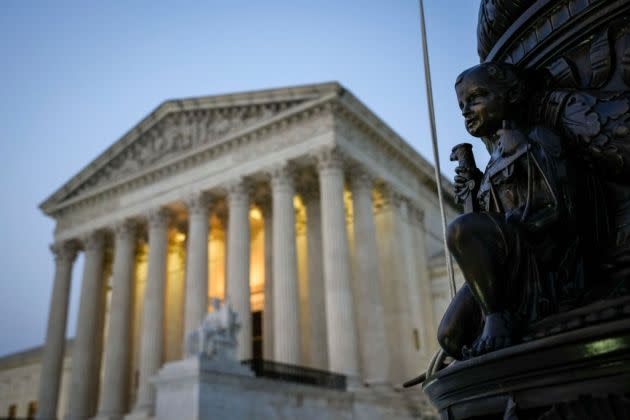The Outside View: Diversity in Danger in Post-affirmative Action Era

For 45 years, Supreme Court decisions have allowed college admissions programs to weigh race — as one factor among many — to ensure racial diversity in higher education. But last week’s majority opinion by Chief Justice John Roberts striking down affirmative action ignores the realities of race in America. And as Justice Ketanji Brown Jackson stated in her dissent, it “stunts that progress without any basis in law, history, logic, or justice.”
There are no winners in ending affirmative action on college campuses and no doubt that this decision will extend to other areas. Black and Latinx students will be denied opportunities to excel in their studies and careers, government and industry will have difficulty building powerful talent pipelines, and students will learn in silos — without knowing and understanding other cultures and differences that make us so special. Creative talent will be hit particularly hard, especially in fashion.
More from WWD
We are three years out from America’s racial justice movement. And while brands and retailers have made progress in improving diversity, many continue to struggle with racial equity and representation. Race still presents barriers to how people live out their daily lives, and these disparities are magnified for talent studying and working in fashion and other creative industries.
Breaking into fashion has been reserved for decades for people with connections and capital to fund coveted (yet low-paid) entry-level positions, or, when they’re ready, to finance their own brands. Black students are pushed to choose medicine, math or science (deemed respectable and financially secure) over fashion, and for the brave souls that follow their true passion, they often do so through circuitous routes.
Award-winning fashion designer Irueosa Osadayi Ohanmu entered into a Ph.D. program in molecular biology before attending Parsons. Ghanaian-American designer Mimi Plange, who has collaborated with Nike and Manolo Blahnik, first obtained a degree in architecture before studying fashion design. I started out in pre-med and majored in psychology before transitioning to fashion law years later.

The Supreme Court’s decision will further limit pathways for Black students to make a way in the arts, with less racial diversity and fewer supportive communities to fuel studies in such areas as fashion design, film and television, textiles and even fashion law. I personally benefited from Fordham University’s Fashion Law Institute and founder and director Susan Scafidi, who has been critical to protecting industry talent. Fashion and the arts make us better people — providing a forum to inspire and educate, express our authentic selves and celebrate our differences. But fashion cannot realize its full impact without diversity, and here’s why:
It’s about opportunity. Education is the first step in building a racially diverse fashion talent pipeline — providing students without legacy (which can still be considered in college admissions) with internships at brands and retailers, access to special programs and design competitions, and as Justice Sonia Sotomayor stated in her dissent, an “entry ticket to top jobs in workplaces where important decisions are made.”
Now U.S. design schools that have prioritized diversity, equity and inclusion in their admissions policies — including The New School (which includes Parsons School of Design), Pratt Institute and the Fashion Institute of Technology — will no longer be able to consider racial diversity in the applicant process. And though the Supreme Court suggests that students may be allowed to discuss how race has impacted their lives, as Justice Sotomayor noted in her dissent, “the supposed recognition” to consider race in essays “is nothing but an attempt to put lipstick on a pig.”
It’s about relatability and understanding. Black talent is still underrepresented in fashion’s power positions in such areas as finance, law, digital and technology. Micro aggressions are real, and the best way to relate to people of different races and cultures is to get to know us. That cannot happen if higher education is siloed for students with wealth and legacy connections. How can all fashion talent understand why it’s essential to have a team trained to do curly and coily hair and makeup for all skin tones — or why Congress must pass the Create a Respectful and Open World for Natural Hair, or CROWN, Act to prohibit race-based hair discrimination in the workplace — if they never socialize with people from different backgrounds and experiences? The majority court repeatedly mentions the term “colorblind” to emphasize that race does not matter. But as Justice Jackson stated in her dissent, “deeming race irrelevant in law does not make it so in life.”
Fashion plays a major role in how all people are represented and valued, not just here in America, but everywhere. Ending affirmative action will narrow the lens through which many view the world.
I stated at the Fashion Law Institute’s designing diversity panel last November that the battle against affirmative action isn’t just for universities to address. It will take everyone — in academia, industry, civil society and government — to ensure a diverse, equitable and inclusive learning environment for all students.
As Justice Sotomayor wrote in her dissent: “The pursuit of racial diversity will go on.”
Kenya Wiley is a policy counsel and fashion law professor at Georgetown University, where she studies the intersection of fashion law, race and social justice. She previously served as a director for the Motion Picture Association’s legal department, and she designed and implemented MPA’s academic outreach program for colleges and law schools.
Best of WWD